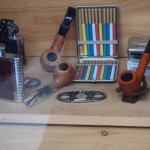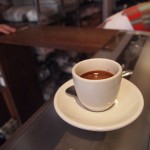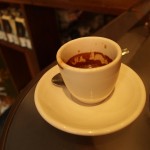The Olympus EPL-1 is not a camera that many readers of ThePhoblographer would flock towards, however, I decided to give it a second look as I have been told that my previous posting was very harsh on the camera. This time, I not only tried my friend’s camera but also one at a local camera dealer. Let’s get right into this with another analysis then.
Color Rendition
Olympus has come a long way in this from the days of the Olympus E-510 (a camera that used to accompany me everywhere.) However, this only applies to the more vivid colors that it can provide if the correct options are dialed into the camera. In standard, the LiveMOS sensor still proves to not be able to keep up with Canon and Nikon. For the audience that this camera is intended for though, they will be happy with this, once they figure out how to do it.
Autofocus
As stated in the original trial, it isn’t very smart. It doesn’t track moving objects well either. However, if you are getting people together for a photo or taking pictures of random objects then you’ll have no problem at all. Try taking a picture of your kids or dog and it may be a different story as they both tend to move around quite a bit.
Ergonomics
Holding this camera like a point and shoot provides a good user experience. Holding it the way one would a rangefinder or a DSLR is something totally different. It tends to get uncomfortable at times and smooth finish doesn’t help with gripping the camera. Some more texture couldn’t hurt.
Additionally, the lack of dials doesn’t help to prep this audience for moving onto the next step up: a more advanced interchangeable lens camera body of some sort. Point-and-shoot users may be okay with this depending on the manufacturer you are coming from. Canon tends to put dials on lots of their cameras now as it has been a successful move for them.
As previously stated, this unfortunately doesn’t help out very much with using manual, aperture and the more advanced modes. I actually wish they would have just gotten rid of those features altogether unless they added the dials in.
Image Quality
Part of a camera’s image quality is in the lens. The EPL-1’s kit lens offers some very sharp images, as does most of the Zukio line. The sensor, while versatile in what it is capable of doing, offered very lacking features in the standard modes. To really take advantage of what this camera can do, users need to dial up the saturation.
In Live Guide (spoken about in just a moment) one can’t really see just how large the dynamic range is on this camera. When users go into the color mode and scroll from muted to vivid, the results aren’t as apparent as they are when you export your images onto your computer. Part of this can be blamed on the LCD screen, which the entire Micro Four Thirds line is actually plagued by.
Feature Set
The art filters are really cool, especially Pop Art and Diorama as I explained in the first trial of this camera. What is a bit bizarre though is the fact that there is a port to allow for use of an electronic viewfinder and an external microphone. Using a viewfinder with this camera is not very uncomfortable to do as it is smaller than the other Micro Four Thirds cameras and it is also not very comfortable to hold like a DSLR or rangefinder. Holding the camera like a point-and-shoot while using the viewfinder may perhaps be the best option available.
Live Guide
The Live Guide is the feature that the Olympus marketing team seems to be wanting to push. Advanced users, professionals, and some enthusiasts will have no problem conquering and learning the ins and outs very quickly. The Live Guide is accessed through the iAuto mode on the EPL-1. It’s pretty clearly laid out for users that care to take advantage of it. The majority of this review was shot in this mode.
What’s very nifty is that this feature also offers tips to the user. Whether the user accesses them or not is their problem. The guide is designed pretty intuitively, but the button layout to access the features further on in the menus may confuse those stepping up from a point-and-shoot.
The sad thing though is that Olympus did not put more emphasis on making this feature more prominent to the camera for the intended audience: those users stepping up from a point-and-shoot camera to an interchangeable lens camera of some sort. New York City is littered with them: but chances are that they’re carrying Rebels or a D5000. Additionally, they’re typically shooting in auto, letting the pop-up flash come up, and will use nothing else but the kit lens or one that is one step above in terms of zoom range. They’re very rarely changing their settings.
As I’ve seen with some of my students and after studying the typical habits of the casual camera user, this will intimidate most people or they may just forget about it and, “point-and-shoot.” This was talked about more in my ZS-7 review and how the typical user may not care for lots of these features.
That said, I actually hope that Olympus offers a student discount of some sort with this camera as I see students being the ones that may go after a camera like this as it can help them learn.
Conclusions
Though I didn’t get to test out the High ISO features on this camera, it still is not one that I’d recommend to the average Phoblographer reader. It is a camera that you would perhaps buy for a student and literally tell them to figure it all out themselves. People that buy DSLRs and leave them on auto will not fully appreciate the feature set that this camera offers and will not be able to experience everything that it is capable of.
To that end, it might be better for Olympus to perhaps work on a camera model even simpler than the EPL-1 and target that more towards the people that just shoot in auto. The EPL-1 could perhaps evolve into a camera that could become the companion to many learners or students the way that many Leicas and the Canon AE-1 did a long time ago. The EP-2 and the EP-1 are still more advanced and will better suit the audience and readers of this blog.
Chances are that we can expect Panasonic to release their own version of this camera in order to compete.


















